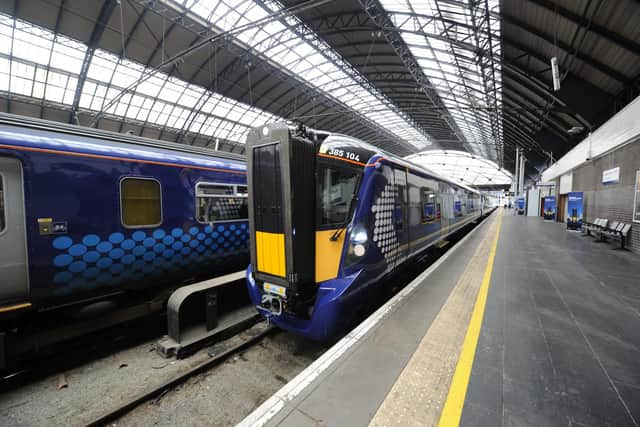ScotRail's trains have been on a reputational rollercoaster – Alastair Dalton
It is perhaps a indication of the huge public affection for the network, its rich heritage and the romance more often associated with train travel than any other mode.
Unfortunately for ScotRail and other train operators, those unexpected happenings are all too often of the negative type.
Advertisement
Hide AdAdvertisement
Hide AdMy reporting of such pitfalls has got me banned from at least one rail enthusiast group’s Facebook page – awkward truths and all that.
If they hadn’t already, they’d be showing me the door for the latest bad news to befall ScotRail’s trains – and two doses in one week.
One of these involved ScotRail’s newest fleet, which appears to have yo-yoed in terms of the publicity surrounding it since being unveiled in 2016.
The pedigree of its Japanese manufacturer Hitachi and the fact its design was "inspired by the Shinkansen ‘bullet’ train” sounded like good news.


But then, despite extensive overnight testing, it was revealed that drivers could not see signals clearly through the cab windscreen, which had to be replaced, delaying the trains’ introduction by months.
After finally entering service in 2018, initially on the Edinburgh-Glasgow main line, the reputation of the class 385s then bounced back, and they became Britain’s most reliable new trains.
However, last weekend it emerged that some of the fleet were among Hitachi trains to have developed cracks on an underside component used for lifting them during maintenance, and nine of the 70 ScotRail trains were taken out of service.
ScotRail’s other fleet in the news for the wrong reasons was its Inter7City “High Speed Trains” (HSTs).
Advertisement
Hide AdAdvertisement
Hide Ad

Franchise operator Abellio raised eyebrows in choosing to refurbish these 40-year-old workhorses – scrapped by several other operators including cross-Border LNER – for its long-distance routes rather than order brand new trains.
But they are widely admired within the industry and seen as a design classic, so the decision was generally welcomed.
However, the trains have also experienced a reputational rollercoaster since then, with significant delays to their introduction because of difficulties encountered by a sub-contractor in their overhaul, including over the fitting of electric sliding doors and even the carpet design.
That’s all out of the way at last, with ScotRail proclaiming the HSTs’ improved comfort and space compared to the trains they replaced have been a big hit with passengers.
But then rail engineer Gareth Dennis stuck his neck out and said publicly what others, including some ScotRail drivers, were saying privately: that the trains don’t meet modern crashworthiness standards and should be taken out of service.
There has been no official reaction, perhaps unsurprisingly since the final official report into the fatal Carmont crash, involving an HST hitting storm debris, is still awaited.
I’ve been criticised for reporting these concerns, but I believe Mr Dennis’ views, which he presented in a measured way in his rail industry-focused podcast, deserved a wider airing.
But it’s worth repeating what he said to put this into context, and can’t be said too often: “Railways remain the safest form of overland transit by a very long way, but that doesn’t mean the rail industry shouldn’t be striving for better safety.”
A message from the Editor:
Thank you for reading this article. We're more reliant on your support than ever as the shift in consumer habits brought about by coronavirus impacts our advertisers.
If you haven't already, please consider supporting our trusted, fact-checked journalism by taking out a digital subscription.
Comments
Want to join the conversation? Please or to comment on this article.
